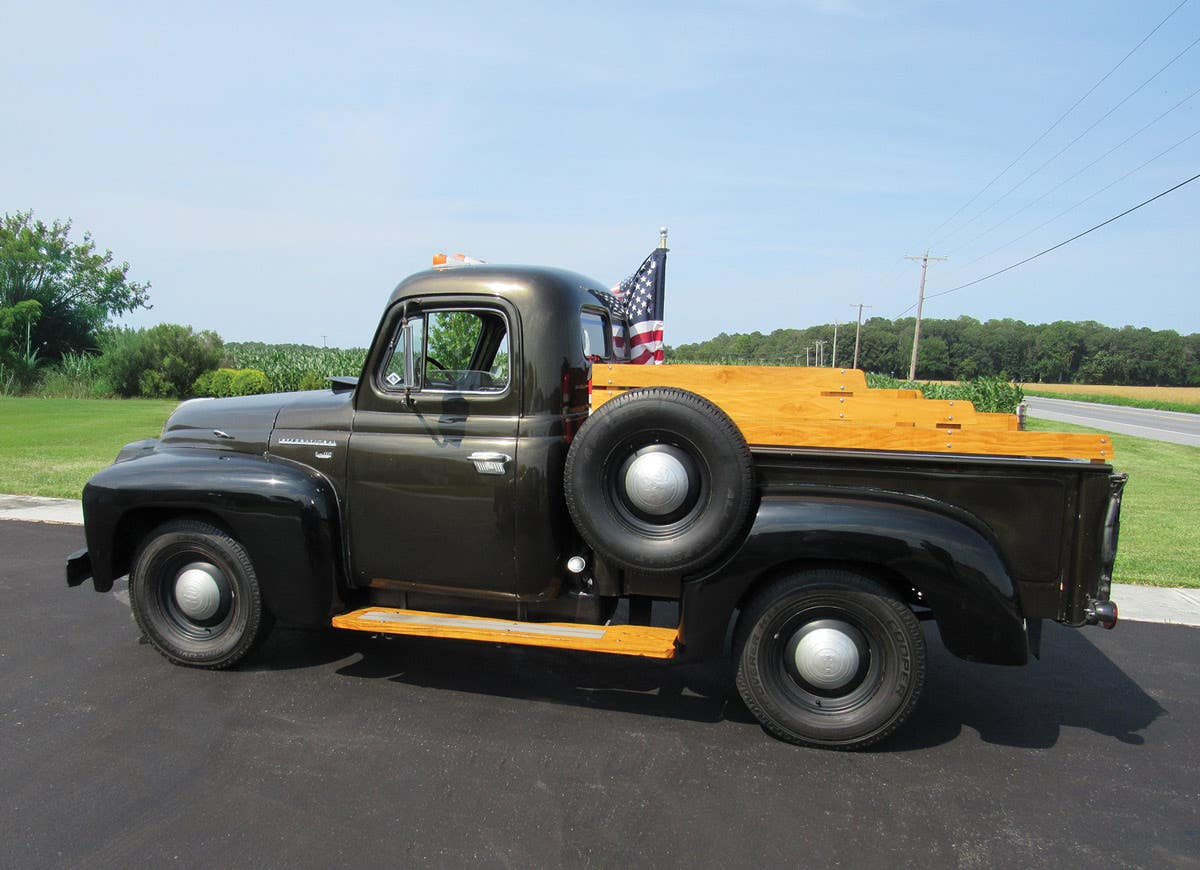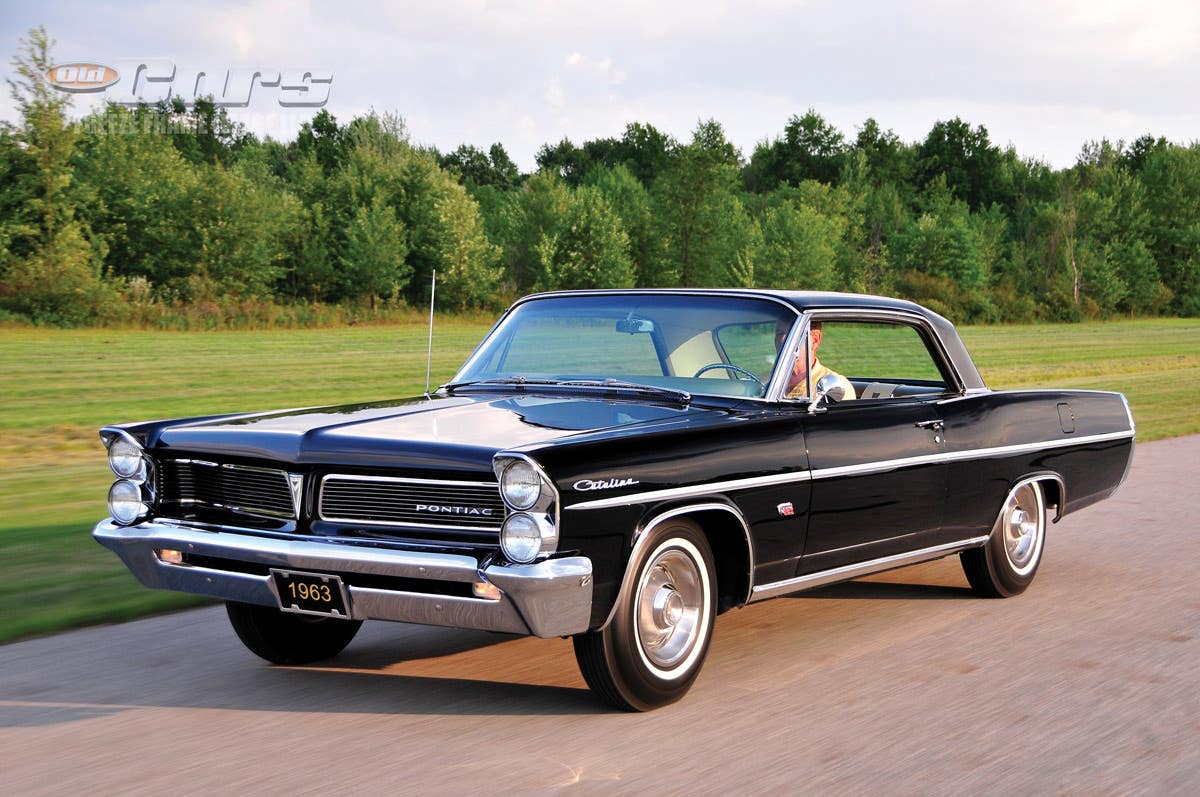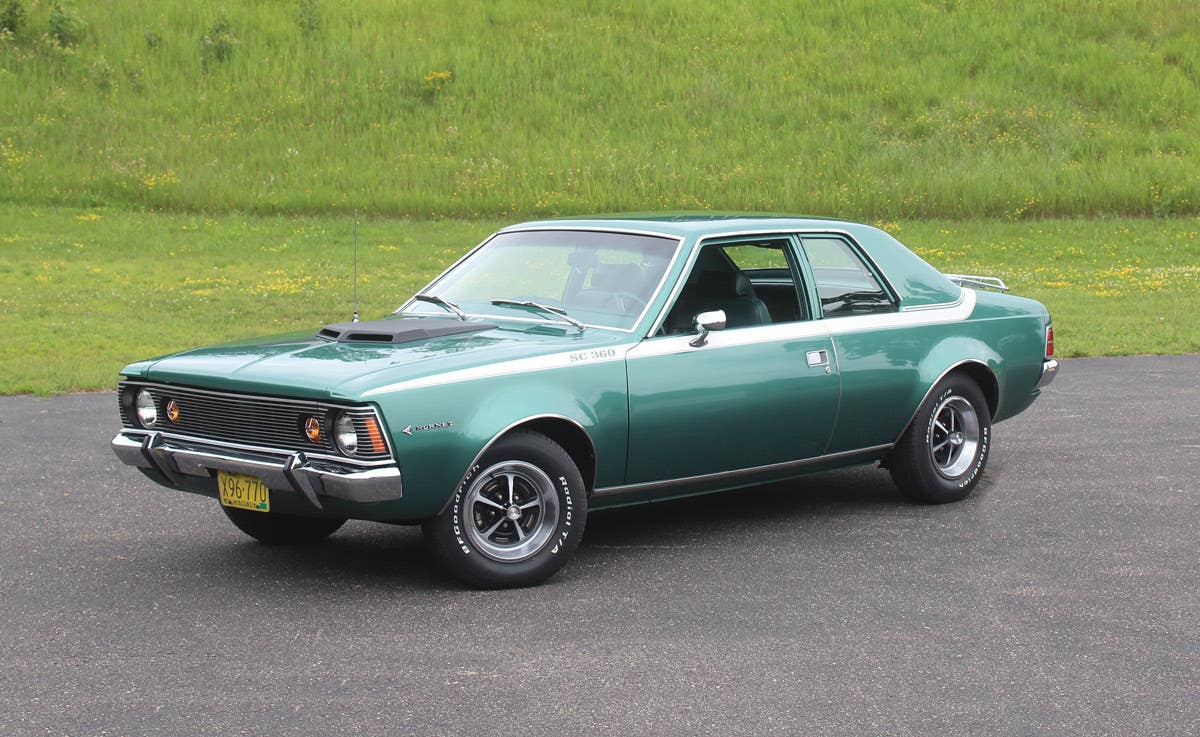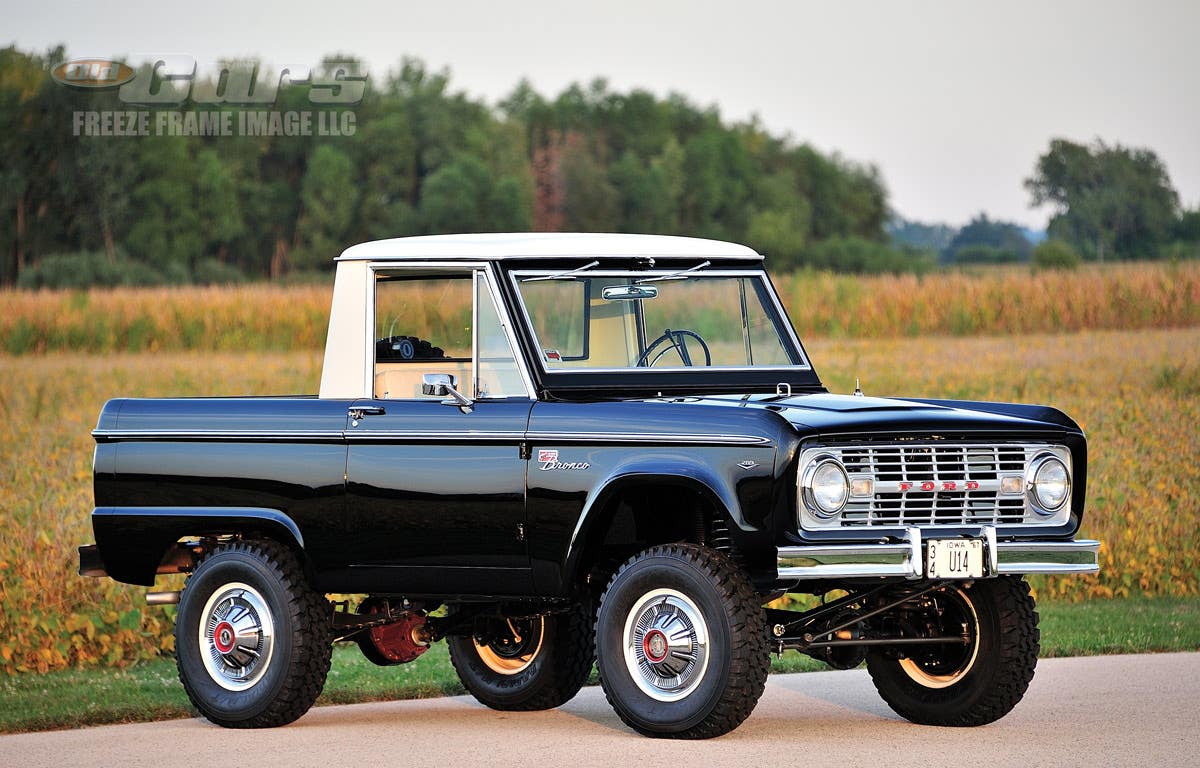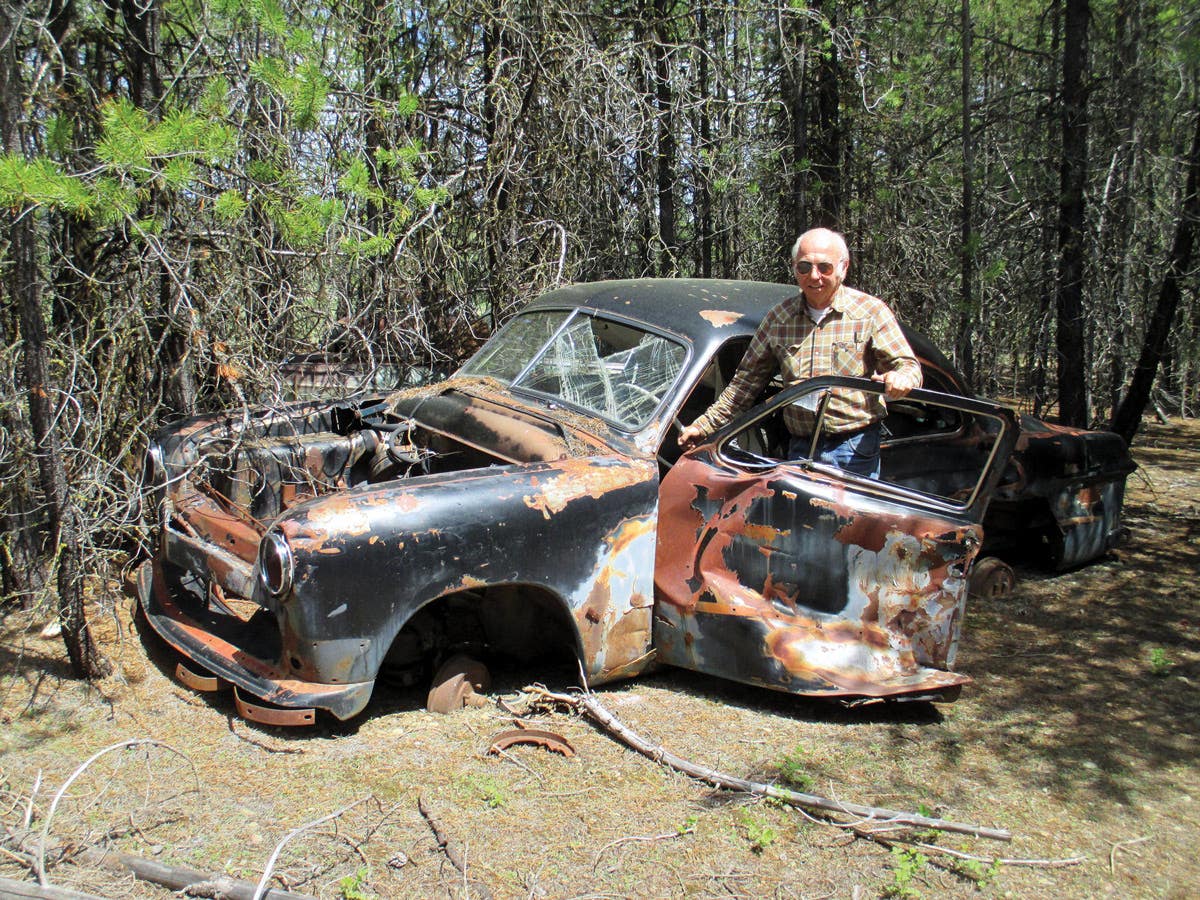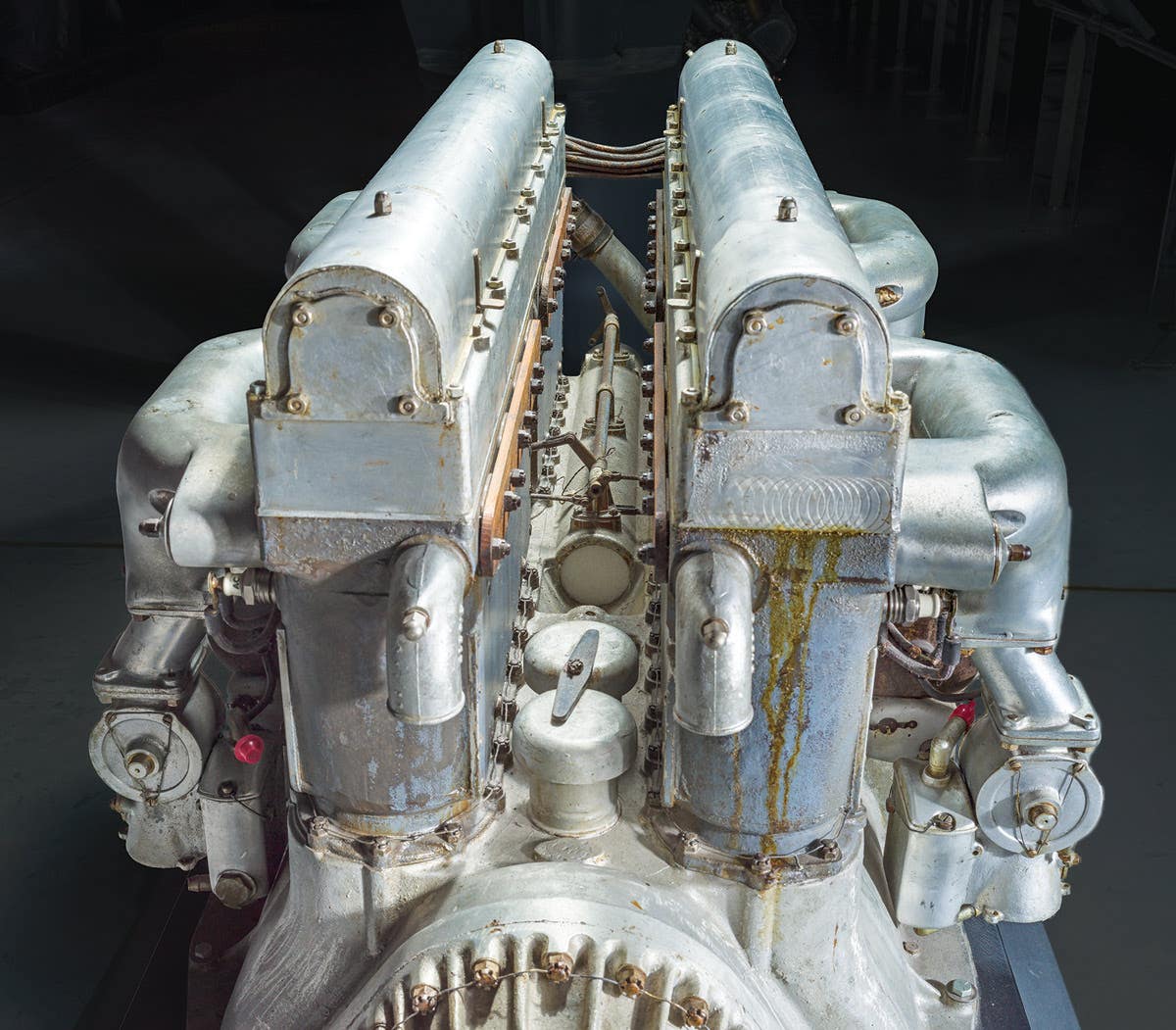Long Hidden Jordan Speedway Ace Revealed…Somewhere East of Anchorage
For many years, rumors of a “Cleveland mystery car” circulated around the city, its exact location hidden and precise identity unknown. By the 1970s, at least two people knew that mystery car was a 1930 Jordan Model Z Speedway Ace roadster. Among those people who knew about the rare Jordan, a car whose name was made famous by the company’s “Somewhere West of Laramie” ads, was well-known car collector and casino owner Bill Harrah. The other was Cleveland car collector Jim Stecker. How Harrah learned of the “Cleveland mystery car” is probably a secret that died with him in 1978.
For many years, rumors of a “Cleveland mystery car” circulated around the city, its exact location hidden and precise identity unknown. By the 1970s, at least two people knew that mystery car was a 1930 Jordan Model Z Speedway Ace roadster, one of 14 Model Zs built, and it was in the Cleveland suburb of Collinwood. Among those people who knew about the rare Jordan, a car whose name was made famous by the company’s “Somewhere West of Laramie” ads, was well-known car collector and casino owner Bill Harrah. The other was Cleveland car collector Jim Stecker.
How Harrah learned of the “Cleveland mystery car” is probably a secret that died with him in 1978. Surprisingly, Harrah didn’t hide the fact that the Speedway Ace still existed, if he was asked about it. However, for those who asked, Harrah did his share to maintain the mystery.
“Harrah said he found it, and it was in Alaska,” Stecker said. But all the while, Harrah was paying someone in Cleveland to watch the Speedway Ace after his offer to buy the car was turned down.
Only 14 1930 Jordan Model Z series cars were built, and this is the only remaining car. Jim Stecker pulled this Speedway Ace out of its hiding spot 10 years ago, and recently oversaw its lengthy restoration completed for the 2008 Pebble Beach Concours d’Elegance. The car has been out of public view for more than 60 years.
Around 1975, Stecker became aware of the Cleveland, Ohio-built Jordan Model Z Series of cars through an article by Ken Gross. In reading the article, Stecker learned that so much such excitement surrounded the Model Z, crowds at the New York Auto Show had to wait several hours to get close enough to see them. Despite the public’s excitement, only 14 Model Z Series cars were said to be built: 12 Model Z Sportsman sedans and 2 Model Z Speedway Ace roadsters. So few people knew about the Jordan Speedway Ace roadster hidden in Cleveland, even the article stated that none of the cars existed any longer.
Impassioned by reading the article, Stecker went down to a friend’s shop and started talking about the Jordans he had just read about. The friend, Weert Ley, said he remembered a Jordan in the Cleveland suburb of Collinwood. Stecker, a self-described treasure hunter, was immediately on the hunt.
The straight-eight was sourced through Continental, and was not unique to Jordan automobiles. The Model Z series of Jordans were inspired by aviation, and the 114-hp engine promised to fly the cars up to better than 100 mph. The engine swallows fuel through a Schebler dual-throat carburetor and is backed by a four-speed Warner Gear transmission and.
“One day, I was driving around Collinwood in a 1975 Oldsmobile Toronado with my son Scott,” Stecker said. “I came down East 140th Street to an old house with a row of garages, so I pulled in.
“An old man pulled in behind me with a truck,” Stecker said. “His name was Laddy Kanker.”
It didn’t take long for Stecker to sense that Laddy Kanker wasn’t interested in making new friends. Immediately, Stecker could tell that Kanker had an untrusting nature and preferred to keep to himself, but Stecker felt he was in the right place and wasn’t ready to give up.
“I kept asking him if he had an old car, and I noticed he kept looking at my Toronado. He finally said, ‘Yes,’ and opened the garage where there was a 1947 Cadillac. But there, out of the corner of my eye, was the Jordan. I saw it and my knees buckled.”
Set against a solid mahogany instrument panel are all of the aviation-inspired gauges to properly monitor the Jordan Speedway Ace’s revolutions, conditions and functions. Included in this attractive cluster, starting with the large gauge at the 10 o’clock position, are an altimeter, temperature gauge, compass, oil pressure gauge, clock, fuel gauge, tachometer and speedometer. The handles in the center of the cluster control spark, choke and throttle, while the controls for the Transitone radio are to the right of the cluster.
Stecker could see that Kanker was nearly as smitten with the Toronado as Stecker was with the Jordan Speedway Ace buried in the corner of the garage. Stecker offered to trade his new Oldsmobile for the Jordan, the only remaining Model Z Series car. No deal.
Stirred by the Speedway Ace’s racy looks and its rarity, Stecker did not let the car out of his sight. He spent the next 25 years waiting for the car to become available before landing it in his garage. The car was worth every second of that quarter-century wait, not just because of its rarity, but because of its ties to Cleveland history.
In 1930, Jordan Motor Car Co. of Cleveland, Ohio, displayed two Model Z Speedway Ace models at auto shows. Car No. 13 went to the New York Auto Show, and Kanker’s car, No. 14, went to the Detroit Auto Show in January 1930. At the Detroit show, a man by the name of Harrington bought car No. 14 off the floor for a Depression-scoffing $5,500, a price equivalent to that of some custom-bodied Packards and greater than that of a Cadillac V-16 roadster. Sometime later, Harrington sold the car to a man named Holloway, who lived on Cleveland’s mansion-lined Euclid Avenue. From there, it went to Kanker, who was only 17 or 18 years old at the time of purchase, in 1936.
Both Jordan Model Z Speedway Ace models built were true roadsters, each without a provision for a top. To the untrained eye, it appears they were two-seaters, but this is not the case. In this view of the cozy cockpit, a hinge can be seen on the rear deck aft the seat. This hinge allowed a panel to raise, and with the panel raised and passenger seat slid to a forward position, passengers could enter the rumble seat through the passenger’s side door.
What Kanker purchased was the last hurrah of a one-time hometown hero. His Jordan Speedway Ace rode on a 145-inch wheelbase exclusive to the Model Z, a fitting alphabetical model designation since this was to be Jordan’s last new model. On this imposing chassis stretched a racy, swept-back aluminum roadster body built by Facto Auto Body Co., also of Cleveland, in a factory once operated by the Chandler Motor Car Co.
The car’s long, lithe looks belied its grand size and enormous wheelbase, but an off-the-shelf Continental 12K straight-eight engine of 114 hp ensured the Speedway Ace’s speed could match its looks and take its pilot to Laramie or beyond. And probably earn the driver a speeding ticket while doing so.
Rather than side mounts, all of the Model Z cars photographed when new carried rear-mounted spares for a more fleeting look. There were also no trade-offs at the rear of the Speedway Series cars — the car is not only equipped a rumble seat, but also a trunk, the lid of which is visible behind the spare tire.
Equally sleek-looking and trim Woodlite headlamps flanked a shutter-clad radiator that bore no filler cap on top. At the time of the Model Z series’ arrival, aircraft were heavily influencing automobile design. In the interest of keeping the Model Z series’ styling as clean and aerodynamic as possible, the radiator cap was concealed beneath the hood, which stretched all the way to the windshield. Like the thermostatically controlled radiator shutters, the horizontal hood louvers opened to allow the straight-eight to exhale.
Light fenders over black wall-dressed wire wheels didn’t hinder a clear view to the sleek hood louvers. Each fender was a work of art in its own right; a thin, Armani suit-like crease crested all four fenders from tip to tail. Capping off each front fender was a miniature Woodlite lamp that rhymed with the headlamps. On the driver’s side rear fender, a Woodlite tail lamp was used, the only such use of a Woodlite tail lamp Stecker has seen. This tail lamp bears the word “stop” at the top, a clear lens in the center and an upsidedown triangle reminiscent of the Jordan arrowhead-in-a-shield logo at the bottom.
The headlamps, tail lamps and rhyming front fender lamps are all by Woodlite, and each carries the Jordan logo, as does the spotlight. The tail lamp is particularly unique, as it’s the only Woodlite tail lamp Stecker has seen, and its design continues the Jordan arrowhead logo.
In another nod to the world of aviation, a running board with the profile of an airplane wing was suspended between the unjoined front and rear fenders. Each running board was painted to match the body, striped with thin bright work strips and decked with a lamp on the side (green on the driver’s side, red on the passenger’s side).
Owner Jim Stecker finally sits behind the wheel of the car he’s hoped to own and restore since the mid 1970s. He’s also excited to display the finished car at the Stan Hywet estate in Akron, Ohio, this summer. Only a handful of people have seen this car since 1936, but many will see it in 2008.
Despite his untrusting nature, Kanker shared tales from his pilot days with Stecker, which may have partially explained Kanker’s affinity for the Jordan’s aviation features. Stecker also learned that Kanker had owned a Model Z Sportsman sedan at one time, which was probably given to a World War II scrap drive for its aluminum body and steel chassis. However, it wasn’t until Stecker read Kanker’s obituary in 1998 that he learned Kanker had a sister, Janet Lord, in New York City.
Lord was probably more famous than even her brother’s rare Jordan had been in 1930. She was an actress and singer who sang for four presidents and appeared in the 1933 Broadway play “Girls in Uniform” and at least one episode of the western “Yancy Derringer” in 1958. When Kanker died, Stecker wrote to Lord and stated he knew Kanker and his Jordan and was interested in purchasing the car. Soon after, Lord placed a call to Stecker and they agreed to meet in Cleveland not more than a quarter mile from where the car was built.
Fourteen Model Z’s were built, and all but this Speedway Ace roadster, pictured in a factory photograph, have two spotlights. Since Stecker’s car never had a second spotlight, he’s confident his car is portrayed in this photograph. Stecker’s car is No. 14 of as many built, so he jokes that the company only had one Jordan-emblazoned spotlight left when his car was built. To bring Stecker’s Speedway Ace back to this condition, the expert help of Qual Krom in Erie, Pa., was employed to chrome the new bumpers built for the car, and Art Worledge, president of the Jordan Register, helped make many new castings of emblems, including the Jordan arrowhead on the hubcaps and step plates.
“When Janet walked in anywhere, there was a spotlight on her,” Stecker said. “When I met her at her family home, there were pictures on the mantel. One was Clark Gable with a beautiful brunette, one was Bob Hope with a beautiful brunette, and one was Tyrone Power with the same brunette — that brunette was Janet.
“My dear Connie, the love of my life and my best friend, told me to bring Godiva chocolate to Janet,” Stecker said. Within 10 minutes, “We became fast friends, and that’s how I bought the car,” he said.
“When Laddy died, I asked Janet why he kept the car so long,” Stecker said. “She said, ‘When he got married, he went on his honeymoon with the car. And every time he walked by it, he kicked it.’”
For most of the 60 years Kanker owned the Jordan, it had been hidden in the same garage. Once the title was in Stecker’s hands and the car was exposed to the sun again, he could finally properly assess the car’s condition, and the prognosis was good. Despite Kanker’s foot assaults, the body remained in good condition and the car was driveable. What’s more, Speedway Aces only came in ivory (a soft yellow color), and this car retained much of its original paint.
“It only has 35,000 miles, but somewhere along the line, the fenders were thrown away and it was modernized with 1937 LaSalle fenders,” Stecker said. For restorer Jim Capaldi of Capaldi Enterprises, recreating the unique fenders originally on the car was one of the most daunting tasks in bringing the Jordan back to the road.
The financially strapped Jordan Motor Car Co. used as many parts from its Great Line 90 series as possible when building the Speedway Aces. However, due to the Speedway Ace’s extended wheelbase and custom coachwork, these parts were largely limited to mechanical features. Unfortunately, the parts that needed replacement on Stecker’s low-mileage car, such as the fenders, were limited to Model Z-only parts. And since Stecker’s Speedway Ace is the only remaining Model Z, acquiring parts from parts cars was out of the question.
“We knew we couldn’t find anything, so we didn’t look, we reproduced it,” Stecker said. “Where are you going to look?”
With no fenders available, Capaldi began the major undertaking of rebuilding the unique and long-gone Speedway Ace fenders out of steel.
He started by making fiberglass fenders to a shape and contour he determined from using photographs as a guide. Through a trial-and-error process, he came up with accurate-looking fiberglass fenders, then took them to George Masavage of Frame Oddities. Masavage created wooden bucks to fit the fiberglass fenders, then slowly pounded and wheeled small sections of metal to fit the bucks. Once the metal panels were formed, they were welded together to complete each fender. Masavage gave the completed metal fenders to Capaldi, who fitted them to the car.
“If it wasn’t for Jim Capaldi, this car would never have been finished. He did a beautiful job.”
Crafting new bumpers for the Jordan was less challenging than making new fenders, but Capaldi ran in to a bit of static when it came to the car’s Transitone radio, which posed its own restoration speed bumps.
“This was probably the first car that came standard with a radio in it,” Stecker said. As a first, or as an early installation of a radio in a car at the least, parts could not be found on dusty, old shelves — they had to be built.
Since Capaldi and Stecker’s goal was to bring the last remaining Jordan Model Z Speedway Ace to concours condition, the running engine and transmission were completely rebuilt to original specifications and the chassis was painstakingly detailed.
“I have a brand-new Cadillac and the hood isn’t as good as the underneath of this car,” Stecker said. Now, his Speedway Ace’s show-worthy condition is causing a new problem. Not until after it was restored did Stecker drive the Speedway Ace, and following its maiden voyage, he found himself in trouble with his restorer.
“I drove it out of the garage and took it 15 feet, and they yelled at me when I took it back because I got the gas pedal dirty. It’s polished aluminum and it’s beautiful, so they made a protective sleeve for it.”
In restoring the car, Capaldi and Stecker did everything in their power to bring the car back to its original configuration, with only one small concession to its current owner’s preference. Stecker did not want a black interior in the car once again, so he chose to have it reupholstered by Portage Trim of Ravenna, Ohio, in red material to an identical pattern. The interior color change required the black highlights on the car’s exterior belt line to be changed from black to red in order to match the interior. Overall, the slight changes make for a more visually striking package.
Janet Lord had always hoped to see the car after it was restored and would call Stecker every few months to see if the car was done. Sadly, she passed away last year, just months before the Speedway Ace’s restoration was completed. But Stecker knows she’d be happy knowing her introverted brother’s magnificent Jordan will once again live an extroverted lifestyle as the star of the show.



